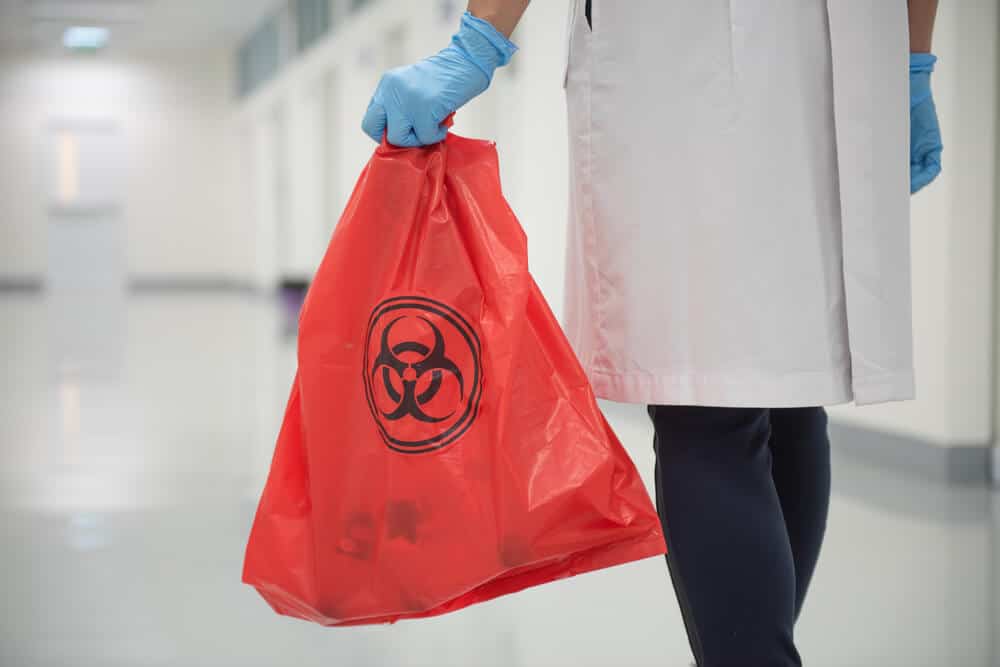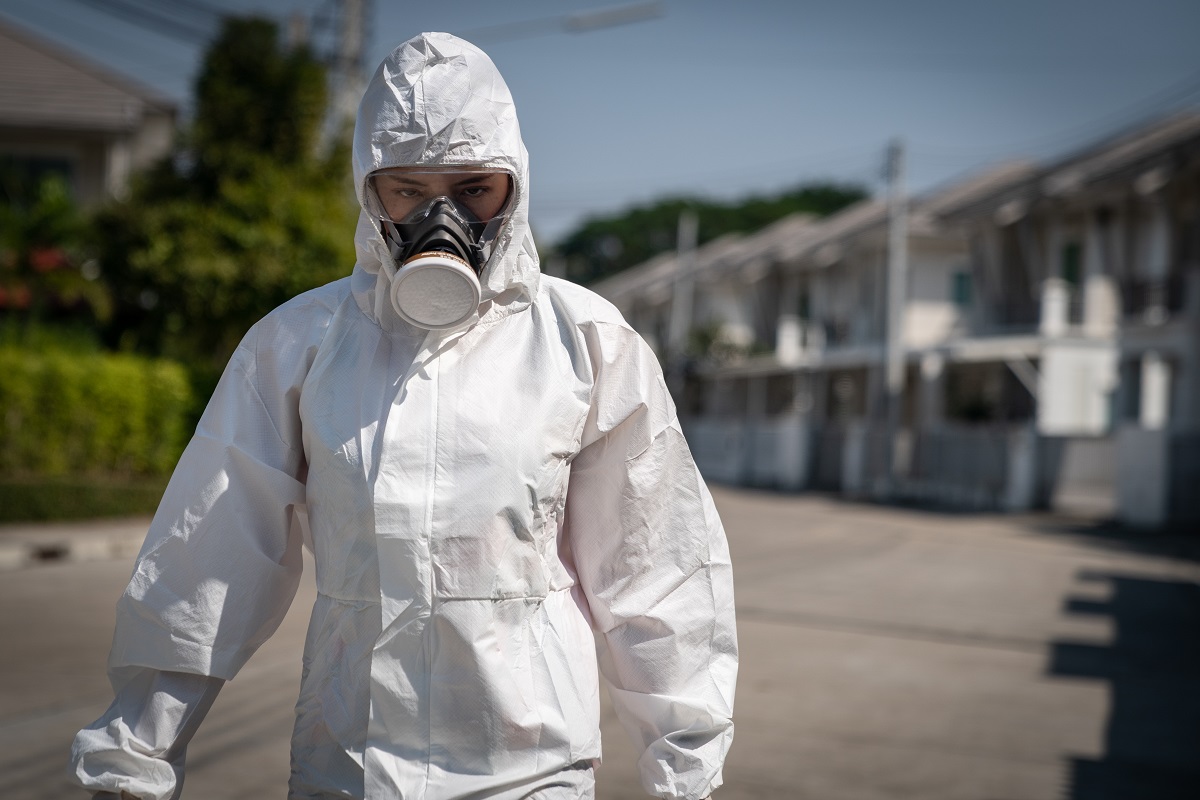Mold Remediation Solutions: Securing Your Building from Mold And Mildew Damage
Mold Remediation Solutions: Securing Your Building from Mold And Mildew Damage
Blog Article
Professional Biohazard Cleaning and Purification for Blood, Bodily Fluids, and Hazardous Materials
In the realm of biohazard cleansing and decontamination for blood, bodily liquids, and hazardous products, accuracy and competence are paramount. The prospective health and wellness risks connected with exposure to biohazards emphasize the critical requirement for thorough handling and comprehensive clean-up. Specialized training outfits professionals with the understanding and abilities essential to address these harmful circumstances effectively. Nevertheless, it is not merely regarding cleansing up; the relevance of using proper decontamination methods can not be overemphasized. As we browse the detailed landscape of biohazard cleanup, understanding the nuances of policies, conformity, and the specific tools at play comes to be vital in making sure a secure and detailed purification process.
Health Risks of Biohazard Exposure
Exposure to biohazards poses significant health and wellness threats that can result in severe repercussions for areas and people alike. Biohazards include a variety of organic substances, consisting of blood, physical fluids, mold and mildew, germs, viruses, and other possibly contagious materials. When individuals enter into contact with these biohazards, whether with crashes, incorrect handling, or environmental direct exposure, they face the risk of having serious ailments or illness.
One of the primary health threats connected with biohazard direct exposure is the transmission of infectious illness. Bloodborne pathogens such as HIV, hepatitis B and C, and different bacteria can be existing in biohazardous products, positioning a straight danger to human wellness. Breathing in air-borne biohazards like mold and mildew spores or entering into contact with infected surfaces can additionally lead to breathing concerns, allergies, and other unfavorable health and wellness impacts.
Moreover, biohazard direct exposure can have long-term health and wellness ramifications, with some conditions manifesting years after the preliminary call (Blood Cleanup). Therefore, it is essential to prioritize proper biohazard cleansing and decontamination to alleviate these wellness risks and ensure the security of communities and people

Specialized Educating for Biohazard Cleaning
When it involves taking care of biohazard cleaning effectively and safely, specialized training plays a fundamental role in ensuring proper decontamination treatments are adhered to. Biohazard clean-up calls for certain understanding and skills to properly reduce dangers related to bloodborne pathogens, physical fluids, and hazardous products. Professionals learnt biohazard cleanup undertake extensive instruction on just how to safely deal with, eliminate, and get rid of biohazardous materials to avoid contamination and exposure.
Specialized training for biohazard cleanup covers an array of crucial topics, consisting of proper personal safety equipment (PPE) use, bloodborne pathogen awareness, decontamination strategies, and dangerous waste disposal protocols. People learnt biohazard clean-up are equipped with the required expertise to examine contamination degrees, identify possible risks, and apply suitable cleaning procedures in conformity with governing requirements.
Continual training and education are vital in the field of biohazard clean-up to stay upgraded on the most up to date purification technologies, security procedures, and guidelines. By purchasing specialized training, biohazard cleanup experts can properly react to emergency cleaning scenarios and protect both public health and wellness and the setting.
Importance of Appropriate Purification Strategies
Utilizing proper purification methods is critical in biohazard clean-up to properly reduce and remove unsafe materials health and wellness risks. Efficient purification not just guarantees the elimination of visible traces of blood, bodily fluids, and other biohazards but also targets unnoticeable microorganisms that may position serious health threats if not properly eradicated. By following rigorous purification procedures, trained professionals can considerably decrease the risk of exposure to dangerous microorganisms, viruses, and microorganisms that can cause illness or infections.
Proper decontamination strategies entail using customized devices and disinfectants that are specifically designed to counteract biohazards successfully. Comprehensive cleansing and disinfection of contaminated locations are vital to avoid the spread of pathogens and ensure a safe atmosphere for occupants. In addition, the right disposal of biohazardous waste complying with purification treatments is important in preventing contamination of various other surfaces or people.

Tools and Tools for Safe Clean-up
When dealing with blood, physical liquids, or unsafe products, biohazard cleansing experts depend on specialized gear to reduce exposure dangers and thoroughly sanitize the affected area. Additionally, biohazard cleaning kits containing anti-bacterials, absorbent products, and biohazard bags are utilized to safely get rid of and have of infected products.
Advanced cleaning tools like hospital-grade anti-bacterials, HEPA-filtered vacuum cleaners, and misting devices are used to disinfect surface areas and eliminate biohazards efficiently. Specialized equipment such as sharps containers and biohazard garbage disposal containers are utilized to safely take care of sharp things and biohazardous waste materials. By utilizing the appropriate devices and tools, biohazard cleansing specialists can make sure a complete clean-up process that prioritizes safety and security and decreases health and wellness risks for both employees and residents of the affected area.
Regulations and Conformity in Biohazard Cleansing
Correct adherence to regulations and compliance requirements is critical in biohazard cleansing to make certain the security of both personnel and the setting. Government firms such as OSHA (Occupational Security and Wellness Administration) and the EPA (Environmental Protection Company) have actually established specific guidelines for biohazard cleaning clandestine lab cleanup procedures to reduce health and wellness dangers and environmental contamination. These policies cover a variety of facets including the handling, transportation, and disposal of biohazardous products, along with the needed training and safety devices needed for personnel associated with the cleanup process.
Biohazard cleansing firms should remain current with these regulations to ensure that their procedures satisfy the needed safety requirements. Failing to follow these laws can result in serious repercussions, consisting of fines, legal activity, and threatening the health and wellness of individuals and the setting. By following strict regulations and compliance steps, biohazard cleaning firms can properly alleviate dangers and ensure a comprehensive and risk-free clean-up procedure for all celebrations entailed.
Final Thought
To conclude, biohazard cleaning and decontamination require specialized training, correct methods, and adherence to guidelines. Exposure to blood, physical fluids, and harmful products postures considerable health and wellness threats, making it critical to make use of the appropriate tools and devices for risk-free cleanup. By adhering to rigorous procedures and guidelines, specialists can properly minimize the risks connected with biohazard exposure and guarantee the safety and security of both themselves and others.
As we navigate the elaborate landscape of biohazard cleanup, recognizing the subtleties of regulations, compliance, and the customized equipment at play ends up being imperative in ensuring a extensive and safe purification process. (Blood Cleanup)
When it comes to dealing with biohazard cleaning effectively and safely, specialized training plays an essential role in making certain appropriate decontamination treatments are followed.Making use of appropriate decontamination strategies is vital in biohazard clean-up to efficiently decrease and eliminate unsafe materials wellness risks. In addition, biohazard cleaning sets containing anti-bacterials, absorbent materials, and biohazard bags are made use of to safely dispose and include of polluted things.
Government companies such as OSHA (Occupational Safety And Security and Health And Wellness Management) and the EPA (Environmental Protection Agency) have actually established certain standards for biohazard cleanup treatments to decrease health dangers and ecological contamination.
Report this page